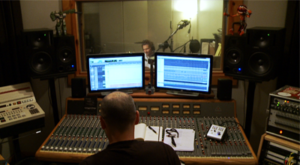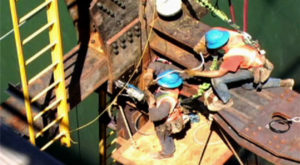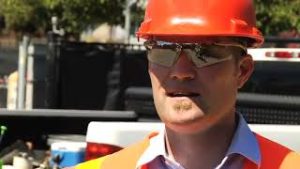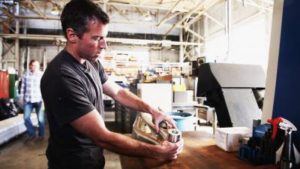Day at Work: Architectural Designer
Description: Architects plan and design houses, office buildings, factories and other structures.
Knowledge Required: A knowledge and practical application of math, engineering techniques, procedures and equipment are absolutely necessary.
Skills: Problem solving, critical thinking and information ordering skills are important because often a design begins as a way to combat a problem. Architects are usually interested and proficient in art (be it drawing or computer art).
Career Path: Architects must pass a state-administered test to gain a license. This test comes after a degree (Associates, Bachelors, or Advanced) and on the job apprenticeship.
Median Annual Income: National: $76,750 CA: $88,350
Future Growth: Jobs in architecture and design will become more abundant as green jobs continue to increase. The US economic stimulus package is expected to boost the creation and transformation of up to 400,000 Green Jobs. In architecture this includes not only new Green buildings but retrofitting existing structures to make them more energy efficient.
Knowledge Required: A knowledge and practical application of math, engineering techniques, procedures and equipment are absolutely necessary.
Skills: Problem solving, critical thinking and information ordering skills are important because often a design begins as a way to combat a problem. Architects are usually interested and proficient in art (be it drawing or computer art).
Career Path: Architects must pass a state-administered test to gain a license. This test comes after a degree (Associates, Bachelors, or Advanced) and on the job apprenticeship.
Median Annual Income: National: $76,750 CA: $88,350
Future Growth: Jobs in architecture and design will become more abundant as green jobs continue to increase. The US economic stimulus package is expected to boost the creation and transformation of up to 400,000 Green Jobs. In architecture this includes not only new Green buildings but retrofitting existing structures to make them more energy efficient.
Day at Work: Audio Engineer
Description: Audio engineers specialize in the use of machinery and equipment for the use of recording, mixing, and manipulating sound.
Knowledge Required: General knowledge of computers and other related electronics. Knowledge of fine art, physics, engineering and technology is helpful.
Skills: Audio engineers train their ears to sound, and are good listeners, critical thinkers, and problem solvers.
Career Path: Audio engineers usually complete a year-long vocational program, followed by formal on-the-job training in studios or recording facilities.
Best Cities for this Job: Large metropolitan areas with a concentration of entertainment such as LA, Seattle, San Francisco, and San Diego.
Median Annual Income: National: $47,080 CA: $53,030
Future Growth: The Bureau of Labor Statistics predicts an average increase of 8 percent for audio engineers.
From the Field: "It's the people I work with. It's just satisfying. When you're around artistic, creative, energetic people, it's infectious." - Kevin Weber, Audio Engineer, Spliggity Fidge
Knowledge Required: General knowledge of computers and other related electronics. Knowledge of fine art, physics, engineering and technology is helpful.
Skills: Audio engineers train their ears to sound, and are good listeners, critical thinkers, and problem solvers.
Career Path: Audio engineers usually complete a year-long vocational program, followed by formal on-the-job training in studios or recording facilities.
Best Cities for this Job: Large metropolitan areas with a concentration of entertainment such as LA, Seattle, San Francisco, and San Diego.
Median Annual Income: National: $47,080 CA: $53,030
Future Growth: The Bureau of Labor Statistics predicts an average increase of 8 percent for audio engineers.
From the Field: "It's the people I work with. It's just satisfying. When you're around artistic, creative, energetic people, it's infectious." - Kevin Weber, Audio Engineer, Spliggity Fidge
Day at Work: Bridge Builder
Description: Civil engineers design and supervise the construction of roads, buildings, airports, tunnels, dams, bridges, and water supply and sewage systems. They must consider many factors in the design process from the construction costs and expected lifetime of a project to government regulations and potential environmental hazards such as earthquakes and hurricanes.
Knowledge Required: Engineering and Technology, Design, English Language, mathematics, physics
Skills: Critical thinking, science, operations analysis, judgment and decision making
Career Path: In general, Civil Engineering requires a minimum of a bachelor's degree. Choose a program that has courses in the specific areas you are interested in. During your education, it is important to try to pursue and internship in the field you are interested in. During your junior or senior year, you need to take the (FE/EiT) Engineering in Training exam. It is a prerequisite for the (PE) Professional Engineering exam. Passing the PE is key to finding employment.
Best Cities for this Job: The top city to pursue a career in the field of engineering is Houston, Texas. The second best city to find employment in the engineering field is Chicago, Illinois. New York, New York, and Atlanta, Georgia come in fourth and fifth, respectively. In California, San Diego, Los Angeles, and Santa Clara offer many employment opportunities. There are many engineering jobs available throughout the United States. Jobs are often more readily available to those willing to relocate outside of metropolitan areas.
Median Annual Income: National: $76,590 CA: $90,460
Future Growth: The Bureau of Labor Statistics predicts a 24% growth in the field, much faster than average.
From the Field: "I'm the type of person who likes to think fast, use my engineering background and my construction background and try to determine repairs on the go. Some people run away from that kind of thing, you know the pressure, but I seem to thrive." -Ken Brown, Civil Engineer, CalTrans
Knowledge Required: Engineering and Technology, Design, English Language, mathematics, physics
Skills: Critical thinking, science, operations analysis, judgment and decision making
Career Path: In general, Civil Engineering requires a minimum of a bachelor's degree. Choose a program that has courses in the specific areas you are interested in. During your education, it is important to try to pursue and internship in the field you are interested in. During your junior or senior year, you need to take the (FE/EiT) Engineering in Training exam. It is a prerequisite for the (PE) Professional Engineering exam. Passing the PE is key to finding employment.
Best Cities for this Job: The top city to pursue a career in the field of engineering is Houston, Texas. The second best city to find employment in the engineering field is Chicago, Illinois. New York, New York, and Atlanta, Georgia come in fourth and fifth, respectively. In California, San Diego, Los Angeles, and Santa Clara offer many employment opportunities. There are many engineering jobs available throughout the United States. Jobs are often more readily available to those willing to relocate outside of metropolitan areas.
Median Annual Income: National: $76,590 CA: $90,460
Future Growth: The Bureau of Labor Statistics predicts a 24% growth in the field, much faster than average.
From the Field: "I'm the type of person who likes to think fast, use my engineering background and my construction background and try to determine repairs on the go. Some people run away from that kind of thing, you know the pressure, but I seem to thrive." -Ken Brown, Civil Engineer, CalTrans
Day at Work: Chevron Environmental Manager
Description: An environmental manager is responsible for overseeing the environmental performance of private, public and voluntary sector organizations. They also develop, implement and monitor environmental strategies, policies and programs that promote sustainable development.
Knowledge Required: Biology, chemistry, geography, hydrology, hazardous-waste management, environmental legislation, chemistry, fluid mechanics, geologic logging
Skills: Computer modeling, data analysis and integration, digital mapping, remote sensing, Geographic Information Systems
Career Path: A bachelor's degree in any life or physical science is required for entry level jobs, although many employers prefer a master's degree.
Best Cities for this Job: The top cities for the job are Houston, Texas; Atlanta, Georgia San Francisco, California, Cleveland, Ohio, and New York, New York.
Median Annual Income: National: $61,010 CA: $104,690
Future Growth: The Bureau of Labor Statistics predicts employment of environmental scientists and specialists to increase by 28 percent between 2008 and 2018, much faster than the average for all occupations.
From the Field: That's definitely priority number one, that we get in there and make sure we understand what's out there and do the right thing to clean it up.
Did You Know?: Federal, State, and local governments employ 44 percent of all environmental scientists and specialists.
Knowledge Required: Biology, chemistry, geography, hydrology, hazardous-waste management, environmental legislation, chemistry, fluid mechanics, geologic logging
Skills: Computer modeling, data analysis and integration, digital mapping, remote sensing, Geographic Information Systems
Career Path: A bachelor's degree in any life or physical science is required for entry level jobs, although many employers prefer a master's degree.
Best Cities for this Job: The top cities for the job are Houston, Texas; Atlanta, Georgia San Francisco, California, Cleveland, Ohio, and New York, New York.
Median Annual Income: National: $61,010 CA: $104,690
Future Growth: The Bureau of Labor Statistics predicts employment of environmental scientists and specialists to increase by 28 percent between 2008 and 2018, much faster than the average for all occupations.
From the Field: That's definitely priority number one, that we get in there and make sure we understand what's out there and do the right thing to clean it up.
Did You Know?: Federal, State, and local governments employ 44 percent of all environmental scientists and specialists.
Day at Work: Electric Motorcycle Engineer
Overview: Marc Fenigstein, who took classes in philosophy and logic to supplement his education, is deeply passionate about reinventing the motorcycle. In this Day at Work video, Marc shares his mission to create fast, innovative electric motorcycles.
Day at Work: Electric Vehicle Technician
Overview: Ben G. went from studying landscape architecture to becoming an electric vehicle technician who is passionate about climate change. Find out how he integrates the two studies in his field!
)





